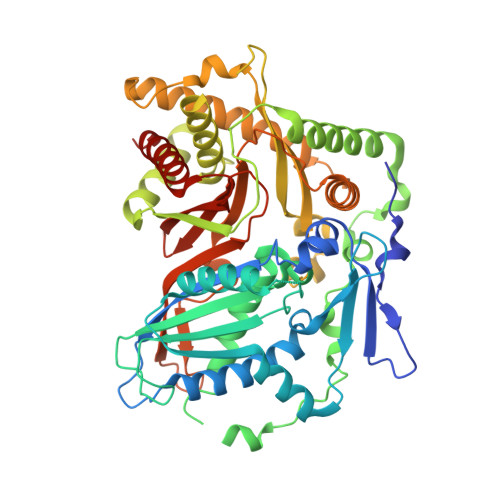Structural and functional characterization of TRI3 trichothecene 15-O-acetyltransferase from Fusarium sporotrichioides
Garvey, G.S., McCormick, S.P., Alexander, N.J., Rayment, I.(2009) Protein Sci 18: 747-761
- PubMed: 19319932
- DOI: https://doi.org/10.1002/pro.80
- Primary Citation of Related Structures:
3FOT, 3FP0 - PubMed Abstract:
Fusarium head blight is a devastating disease of cereal crops whose worldwide incidence is increasing and at present there is no satisfactory way of combating this pathogen or its associated toxins. There is a wide variety of trichothecene mycotoxins and they all contain a 12,13-epoxytrichothecene skeleton but differ in their substitutions. Indeed, there is considerable variation in the toxin profile across the numerous Fusarium species that has been ascribed to differences in the presence or absence of biosynthetic enzymes and their relative activity. This article addresses the source of differences in acetylation at the C15 position of the trichothecene molecule. Here, we present the in vitro structural and biochemical characterization of TRI3, a 15-O-trichothecene acetyltransferase isolated from F. sporotrichioides and the "in vivo" characterization of Deltatri3 mutants of deoxynivalenol (DON) producing F. graminearum strains. A kinetic analysis shows that TRI3 is an efficient enzyme with the native substrate, 15-decalonectrin, but is inactive with either DON or nivalenol. The structure of TRI3 complexed with 15-decalonectrin provides an explanation for this specificity and shows that Tri3 and Tri101 (3-O-trichothecene acetyltransferase) are evolutionarily related. The active site residues are conserved across all sequences for TRI3 orthologs, suggesting that differences in acetylation at C15 are not due to differences in Tri3. The tri3 deletion mutant shows that acetylation at C15 is required for DON biosynthesis even though DON lacks a C15 acetyl group. The enzyme(s) responsible for deacetylation at the 15 position of the trichothecene mycotoxins have not been identified.
Organizational Affiliation:
Department of Biochemistry, University of Wisconsin, Madison, Wisconsin 53706, USA.
















